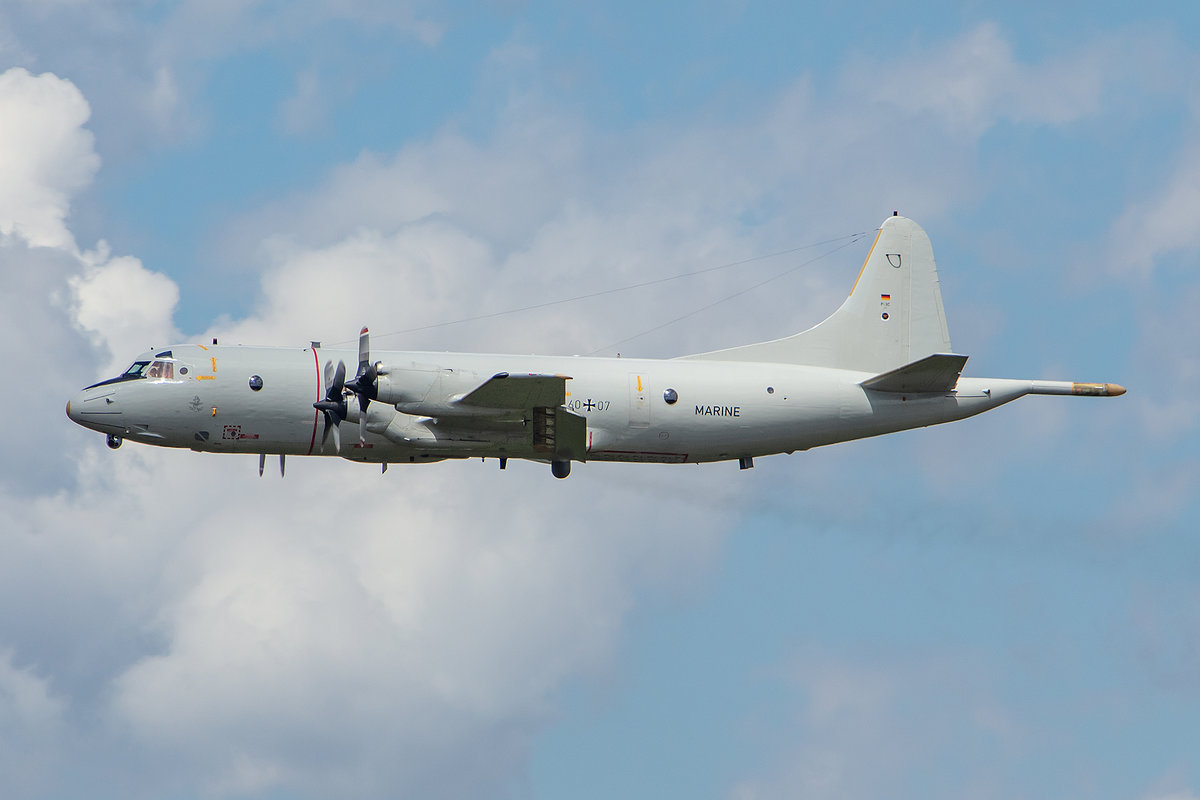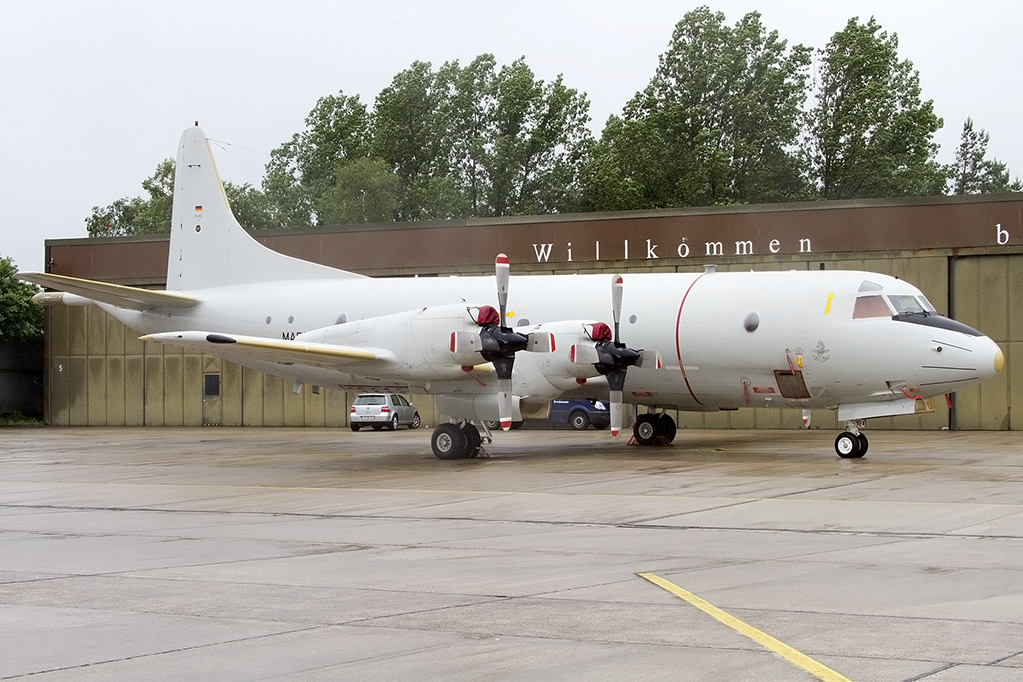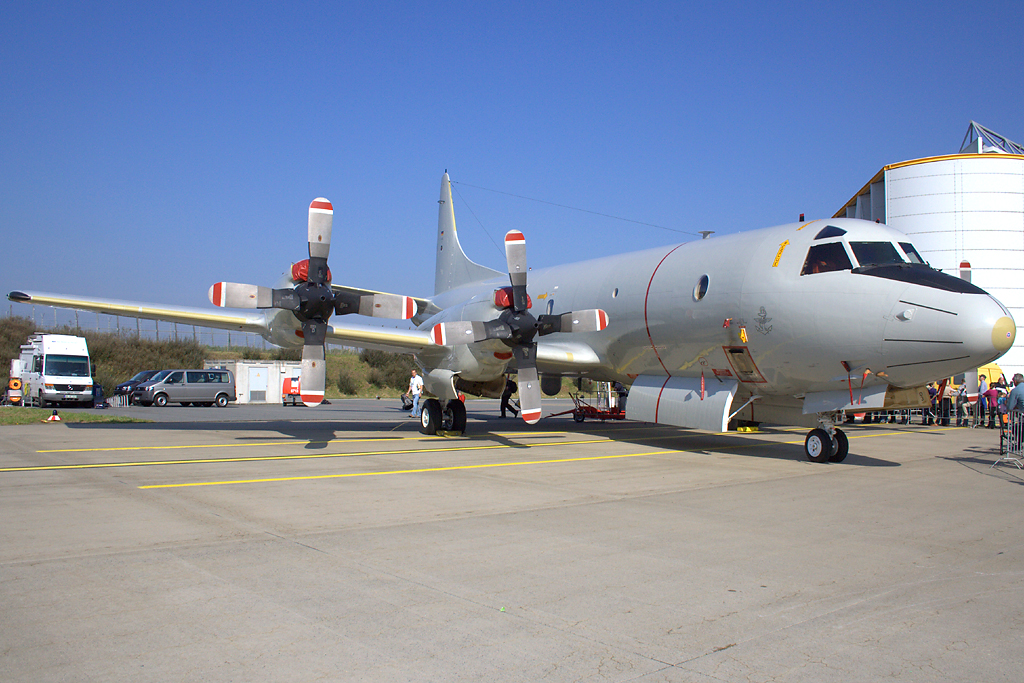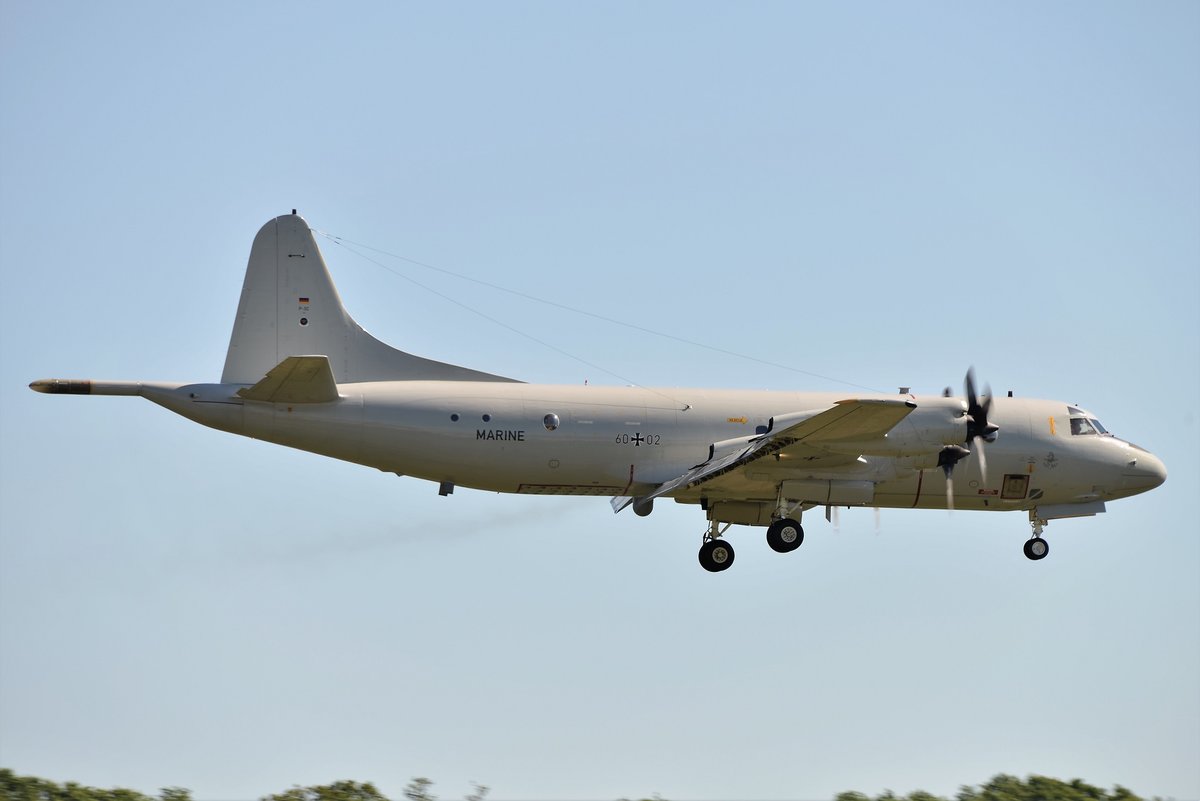- Yes!
- No!
In the 1980’s Germany was looking for a replacement of the Breguet 1150, and in 1985 a study called the “Maritime Patrol Aircraft für die 90er Jahre (MPA 90)” was started, which had the goal to replace the Breguet with the P-3C Orion Upgrade 4, and in 1997 Lockheed Martin made Germany (as well as Italy), an offer for the Orion 2000, however, this plan was cancelled declined by Germany.
In 2002, Lockheed Martin yet again made an offer to Germany, this time with a P-3C Orion with overhauled wing-surfaces and Allision T56 engines, however, this was yet again declined.
In 2003 finally, Germany accepted the Netherland’s offer of five P-3C Upgrade II½ planes, which were retired from the Royal Netherlands Navy due to budged cuts.
The contract was later changed to increase the number of planes to eight, and before being sold to Germany, the planes were upgraded from “Upgrade II½” to “CUP Upgrade II½” standard, which brought their capabilities up to the same level as that of P-3C’s with the “Upgrade III” equipment-kit.
The eight P-3C’s were subsequently bought by Germany for a total of 441.52€ million in 2004, and adopted in 2006, with further upgrades being conducted in Germany for an additional 500.00€ million.
The first P-3C Orion was delivered to Germany on the 18th May 2006, with the plane-type replacing the aging Breguet Atlantic 1150 completely by 2010.
The planes currently (2021) serve with the squadron “Marinefliegergeschwader 3 (MFG 3) Graf Zeppelin”, which mainly operate them for long-range reconnaissance and patrol duties, however, the plane is also capable of carrying out combat missions against ships, submarines and if needed, ground- and even air-targets.
The German pilots and ground-crews are fond of the P-3C, sometimes calling it the “gentle giant” because, even though it has 4 massive turbo-propeller engines, it is a comparably quiet plane.
On June 23rd 2021, Germany has approved the purchase of five Boeing P-8A Poseidons, which will replace the P-3C as soon as the P-8A’s are delivered by the US, which is thought to be around 2024. This was done, because of increasing maintenance costs, and the upgrade program, that has been slower to realize its planned goals than initially anticipated, while the costs for the upgrades kept skyrocketing.
Images:
Specifications:
Crew: 11 (1x pilot, 1x co-pilot, 1x flight-engineer, 1x flight-electrician, 1x tactical coordinator, 1x navigator, 3x overseas-sensor operators, 2x underwater-sensor operators)
Length: 35,61m
Wingspan: 30,37m
Height: 10,27m
Empty weight: 27,892kg
Max takeoff weight: 64,410kg
Fuel-tank capacity: 34,800l
Engines: 4x Rolls-Royce-Allison T56-A-14 turboprops with 4910hp each
Max speed: 761km/h at 4575m
Max speed sea-level: 638km/h
Cruising speed: 639km/h at 7620m
Climbing speed: 16m/s
Service ceiling: 8625m
Range: 2494km
Defensive systems: AN/AAR-47 radar warning receiver and AN/ALE-47(V) flare-dispensers
Changes on the P-3C Orion CUP Upgrade II½ compared to P-3C Upgrade II½:
-
ASQ-227 central computer
-
ASQ-78B acoustic processing suite
-
APS-137B(V)5 radar
-
Infra-red detection system
-
Sonobuoy reference system
-
ALR-66C(V)3 ESM system
-
SATCOM
-
Ability to carry and launch AGM-84 Harpoon anti-ship missiles
Armaments (One internal bomb-bay, plus the possibilites for up to 10 wing-mounted pylons):
Torpedos:
8x Alliant Techsystems Mk.46 torpedos
6x Honeywell Mk.50 Barracuda torpedos
6x Raytheon Mk.54 MAKO torpedos
Bombs:
10x CBU-100 cluster-bombs
10x Mk.20 cluster-bombs
8x BLU-110 / BLU 110B 1000lb bombs
10x BLU-111A / BLU-111B 500lb bombs
Depth-Charges:
2x Mk.101 Lulu 11kT nuclear depth-charges
3x B57 20kT nuclear depth-charges
Air-to-Air Missiles:
4x AIM-9L air-to-air missiles
Air-to-Ship Missiles:
6x Boeing AGM-84D Harpoon anti-ship missiles
4x Boeing AGM-84E SLAM-ER anti-ship missiles
Air-to-Ground Missiles:
4x Raytheon AGM-64A / AGM-64B / AGM-64E / AGM-64F Maverick air-to-ground missiles
4x Martin-Marietta AGM-12B / AGM-12C Bullpup air-to-ground missiles
Unguided Rockets:
28x FFAR Hydra rockets
Sea-Mines:
10x Mk.62 sea-mines
8x Mk.54 / Mk.63 sea-mines
6x Mk.25 / Mk.39 / Mk.55 / Mk.56 / Mk.65 sea-mines
3x Mk.36 DST sea-mines
Additional technical data:
I personally think the P-3C Orion would make for an excellent 7.7 or 8.0 turbo-prop aircraft, with devastating armaments, flares, RWR, radar and good top-speed. It would be especially effective in ground RB and naval game-modes and I can also see it being very fun in future high-tier ship EC battles, plus the P-3C is one of the very few combat capable, propeller-driven planes, which were used by Germany after World War 2, making it quite unique in this regard.
Thanks for reading, and if you have any additional infos, or want to correct a mistake, feel free to write it under this thread!
Cheers! ![]()
Sources:
Spoiler
P-3C Flight Manual
P-3 Orion Research Group (p3orion.nl)
P-3C „Orion“ | marine-flieger (marine-flieger.de)
Ausrüstung und Technik: Der Seefernaufklärer P-3C Orion (bundeswehr.de)
Marineflieger mustern die P-3C Orion 2025 aus | FLUG REVUE
Boeing Awarded Contract for Five P-8A Aircraft for Germany - Naval News












































